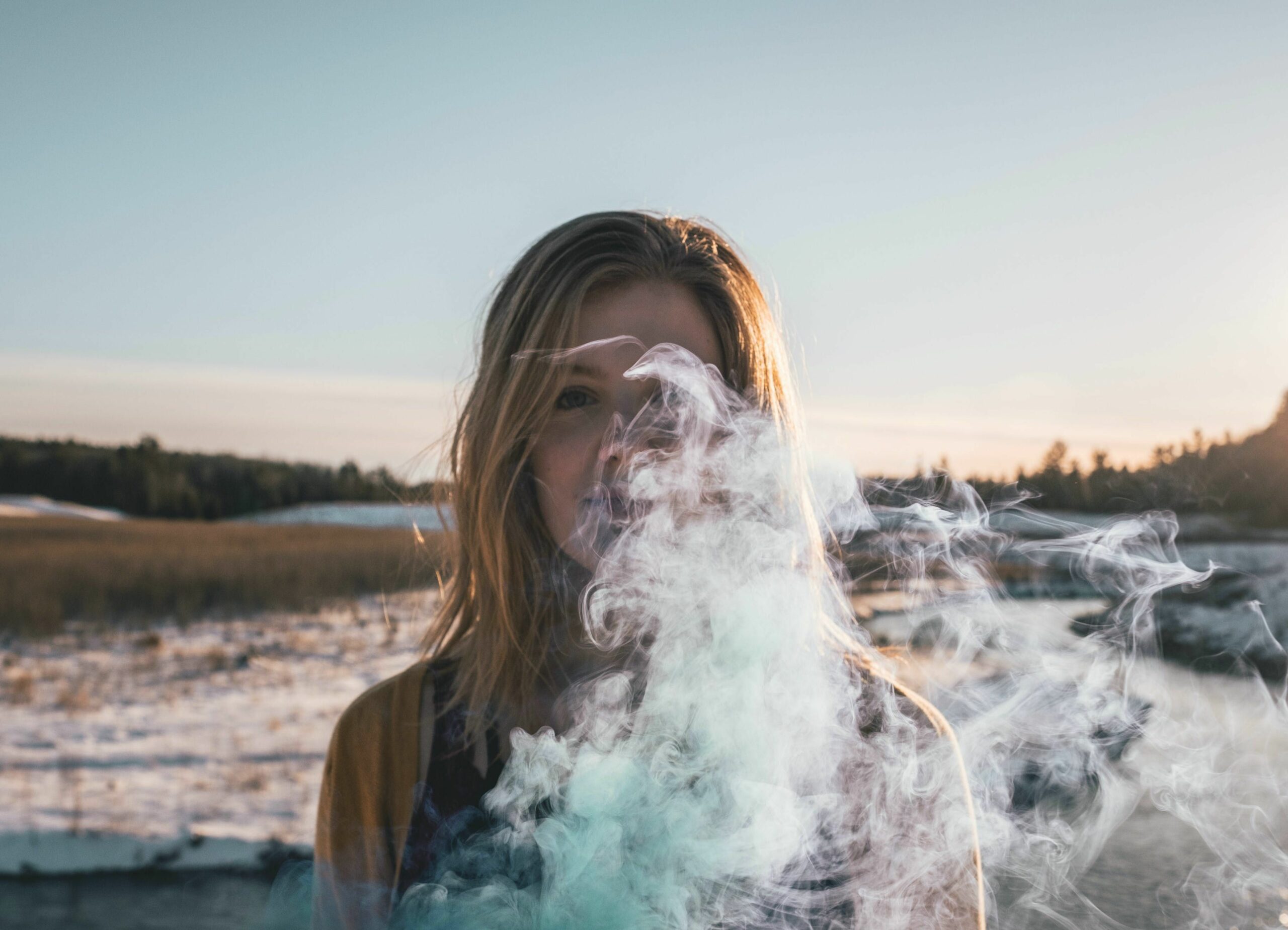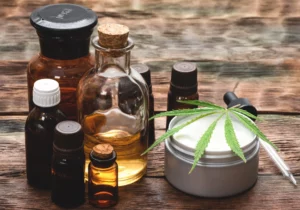Twenty years ago, Canadian snowboarder Ross Rebagliati made headlines at the Winter Olympics when he won the first gold medal in his sport. But he lost his medal the same day for testing positive for tetrahydrocannabinol (THC) in a post-competition drug test. Ross insisted he hadn’t consumed marijuana, and that he’d just spent time with friends who had. He said that his positive test was the result of a contact high—being too close to his friends when they smoked marijuana.
Since cannabis wasn’t actually on the list of banned substances, the Olympic committee reinstated Ross’ gold medal the following day. But the question still lingers: Is it possible to experience a contact high from being around cannabis smoke, even if you never took a puff yourself?
FOLLOW US ON FACEBOOK & INSTAGRAM
The possibility of the contact high is one of the most enduring beliefs about marijuana. For years, people have reported feeling high after a night spent with smoking friends, or like Ross, blaming a failed drug test on the effects of secondhand smoke. Antidrug campaigns have also cited it as another way marijuana can be harmful.
On the other hand, the contact high has been called a complete myth. Many say that no one can get high or experience any other effects from secondhand cannabis smoke. The reality is somewhere in between—and it also depends on the definition of what a contact high actually is.
Some people, under certain circumstances, can have traces of THC in their system after spending time around smokers, but those traces disappear very quickly. And even if contact high isn’t a myth, it also isn’t much of a high either.
Can Secondhand Cannabis Smoke Get You High?
The dangers of secondhand cigarette smoke have been well documented in study after study. But until relatively recently, not much research has been devoted to studying the effects of secondhand marijuana smoke. But as cannabis moves ever further into the mainstream, a number of studies are taking a closer look at the many myths and beliefs—such as the contact high—from the counterculture days that surround this legendary plant.
To see what happens when a nonsmoker spends time around cannabis smokers, researchers in various institutions around the world have examined samples of blood, urine and saliva from volunteers who inhaled secondhand cannabis smoke under various circumstances, such as simply sitting in a coffee shop where several people were smoking marijuana. Other experiments were conducted in the open air, and still others looked at volunteers spending time in an environment where smoke was highly concentrated, also known as “hotboxing.”
In the hotboxing studies, researchers put volunteers in a closed car or a sealed room with smokers consuming a lot of marijuana. Even in these close quarters without ventilation, only traces of THC were detected in the systems of some of the nonsmokers; none reported feeling high.
Study Results & How Both Sides of the Marijuana Debate Use Them
In blood, saliva and urine testing, some of the participants in these studies showed trace amounts of THC and its derivatives THC-OH and THC-COOH in their systems immediately after being exposed to secondhand smoke.
These amounts of THC were well under the limits established by the government (50 nanograms per milliliter) and disappeared within one to three hours after exposure. The THC derivatives THC-OH and THC-COOH are metabolized more slowly and can linger in the body longer than THC itself can, so traces of these chemicals could be present for up to 14 hours. But even these weren’t enough to cause psychoactive effects.
Both sides in the cannabis debate—advocates and anti-drug campaigners—have seized on this research to support their own positions on cannabis safety and benefits. Cannabis advocates use it to point out that contact high is really a myth, because the amounts of THC that enter the system from secondhand smoke are too small to make someone high.
On the other side, antidrug campaigns use the data to show that even being around a cannabis smoker can affect nonsmokers. But researchers point out that just as it’s not likely that someone would get high from secondhand smoke, it’s unlikely that they might fail a drug test with such minimal amounts of THC in their system.
What about all of the people who report feeling high—relaxed, happy, prone to hunger—when they’re around cannabis smokers? It’s likely a psychological effect, say scientists. When you’re around people behaving in a certain way, you take on some of their behaviors yourself. For example, in the company of relaxed, high-spirited smokers, you may feel that way too, even if you weren’t smoking.
Secondhand Marijuana Smoke Has Other Effects
Even if the contact high doesn’t really make someone feel high, cannabis smoke can affect nearby nonsmokers in other potentially harmful ways. It’s been shown that cannabis smoke doesn’t affect the body in the same way that tobacco smoke does, because it lacks the tar and nicotine contained in cigarettes. Another reason for the difference is that cannabinoids in cannabis provide a number of beneficial effects.
RELATED: CANNABINOIDS: CHEMICAL COMPOUNDS WITH HUGE THERAPEUTIC POTENTIAL
But no matter what you smoke, combustion—the process that burns tobacco, cannabis and any other material—generates harmful byproducts and toxins. These byproducts can damage the lungs, circulatory system and tissues.
For years, health experts have warned about the dangers of secondhand tobacco smoke. A large body of research has linked cigarette smoking to lung cancer and other illnesses.
And although there’s not much comparable research on cannabis, some recent studies indicate that cannabis smoke could have harmful effects on bystanders for the same reason: the byproducts of combustion. Cannabis can also contain mold and bacteria not found in cigarettes, which could expose both smokers and nonsmokers nearby to still more toxins.
What About Secondhand Smoke From Vaping & Dabbing Cannabis?
Vaping cannabis has become popular as an alternative to smoking that can eliminate the toxins from combustion altogether. This also means cannabis vapor may pose less of a danger when inhaled secondhand. And although research on secondhand cannabis smoke hasn’t really examined vaping, this method of delivery may be even less likely than smoking to create a contact high in nonsmokers. Vaping has its own hazards though, such as heavy metal toxins leaking from a vape pen battery or questionable ingredients in cannabis oils.
Dabbing is another alternative to smoking that delivers a concentrated form of cannabis when heated to high temperatures. Though research specifically on dabbing hasn’t explored the question of a contact high, some studies have shown that dabbing at very high temperatures can create toxins and carcinogens that can enter the lungs and respiratory system.
As medical cannabis moves into the mainstream, a growing number of studies are working to separate the myths surrounding it from the realities that can help people make informed decisions about it. The contact high is one of those longstanding myths. And now, recent research suggests that for most people in most normal circumstances, getting high from secondhand cannabis really is just that: a myth.
Photo credit: Brian Beckwith
If you’re new to cannabis and want to learn more, take a look at our Cannabis 101 post. HelloMD can help you get your medical marijuana recommendation; it’s easy, private and 100% online.






